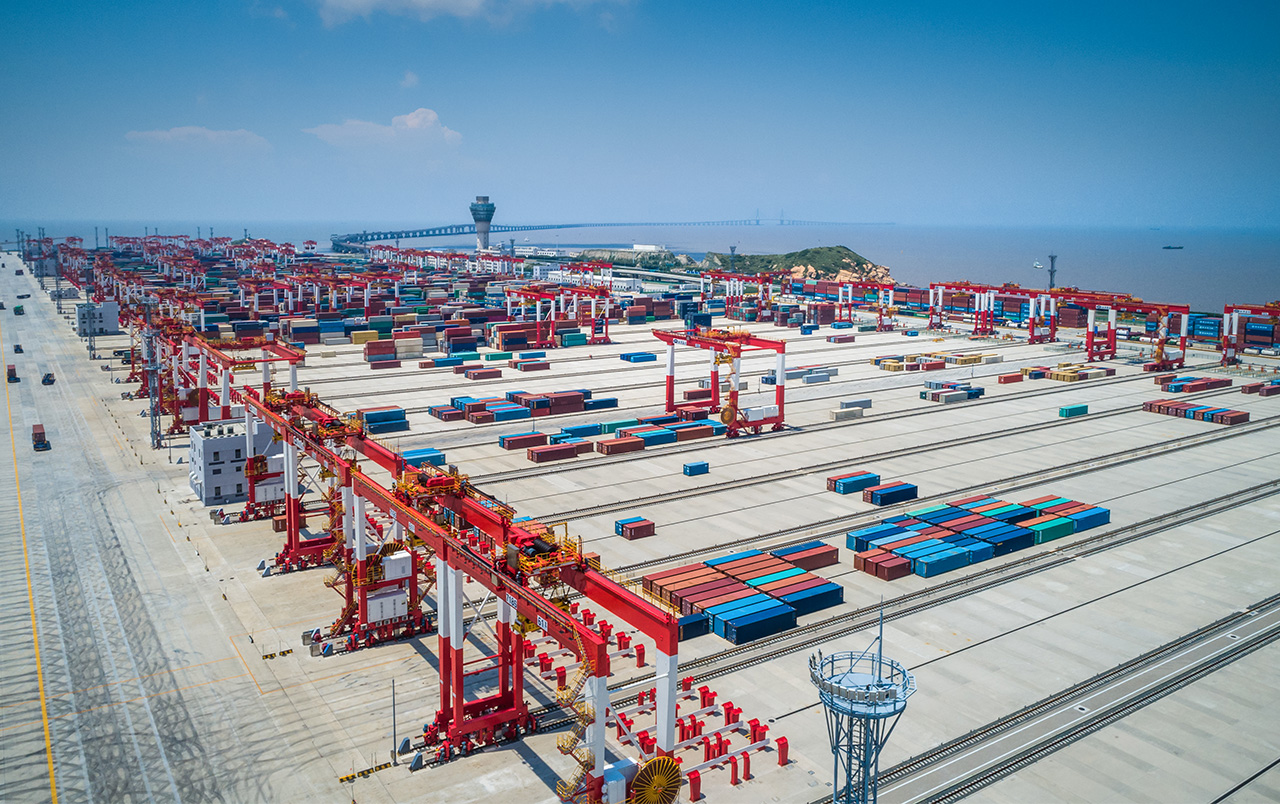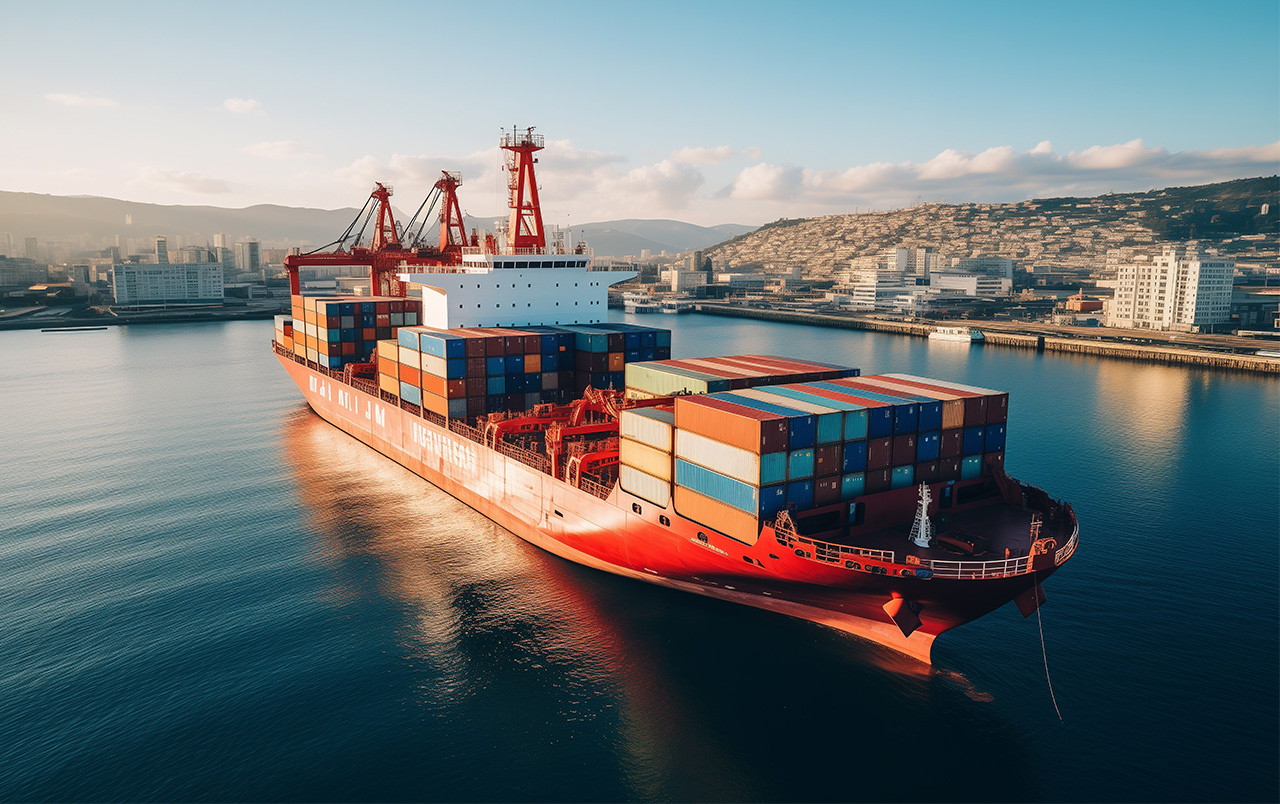
The global sea freight industry has witnessed a significant downturn in recent years. This decline is multifaceted, influenced by a combination of economic, technological, and regulatory factors. Understanding why sea freight is decreasing requires a deep dive into these contributing elements and their interconnected impacts on the global supply chain.
One of the critical aspects in mitigating the challenges posed by the downturn in sea freight is the adoption of advanced equipment and technologies. For instance, the utilization of Heavy-Duty Reach Stacker has been instrumental for many ports in improving efficiency amidst declining volumes.
Global Economic Slowdown
The sea freight industry is closely tied to the health of the global economy. When economic growth slows, international trade volumes typically decline. The International Monetary Fund has adjusted its global growth forecasts downward several times in recent years, citing factors like geopolitical tensions and market volatility. Reduced consumer demand leads to fewer goods being produced and shipped internationally, directly impacting sea freight volumes.
Moreover, emerging markets, which previously drove significant growth in sea freight, are experiencing economic challenges. Countries like China and India have reported slower growth rates, affecting export and import activities. This slowdown in emerging economies contributes to the overall decrease in global sea freight demand.
Impact of Trade Agreements
Changes in international trade agreements have also played a role. The renegotiation or termination of key trade deals can lead to uncertainty and reduced trade flows. Businesses may hesitate to engage in international trade when faced with unclear regulatory landscapes, leading to a further decline in sea freight activities.
Supply Chain Disruptions
Supply chain disruptions have become more frequent due to various factors such as natural disasters, pandemics, and political unrest. The COVID-19 pandemic, in particular, has had an unprecedented impact on global logistics. Lockdowns and restrictions have led to port closures and reduced workforce availability, causing delays and cancellations in shipping schedules.
These disruptions have forced companies to reassess their supply chain strategies. Many are diversifying their logistics solutions, including reducing reliance on sea freight and increasing the use of air and land transportation. This shift is partly due to the need for faster, more reliable delivery methods in uncertain times.
The Rise of Nearshoring
To mitigate risks associated with long-distance shipping, businesses are adopting nearshoring practices—relocating production closer to end markets. This trend reduces the need for sea freight by shortening supply chains. Nearshoring not only lowers transportation costs but also improves responsiveness to market changes, further contributing to the decline in sea freight volumes.
Trade Tensions and Tariffs
Political factors, notably trade tensions between major economies, have led to the imposition of tariffs and trade barriers. The U.S.-China trade war, for example, introduced tariffs on billions of dollars' worth of goods. Such measures increase the cost of international shipping and reduce trade volumes as businesses seek to avoid additional expenses.
These trade policies have a ripple effect throughout the global economy. Companies may opt to source materials locally or from alternative countries with more favorable trade terms, thereby decreasing the demand for sea freight services between certain regions.
Environmental Regulations
Stricter environmental regulations have been introduced to reduce emissions from shipping vessels. The International Maritime Organization's (IMO) 2020 sulfur cap, which limits the sulfur content in marine fuel, has increased operating costs for shipping companies. Compliance requires investment in cleaner fuels or retrofitting vessels with scrubbers.
These additional costs are often passed on to customers, making sea freight less attractive compared to other modes of transportation. Some companies are reconsidering their logistics strategies to minimize environmental compliance costs, leading to a reduction in sea freight usage.
Sustainability Initiatives
Beyond regulations, there is a growing emphasis on sustainability within the corporate sector. Companies are committing to reducing their carbon footprints, which includes reevaluating their shipping methods. Alternative transportation modes that offer lower emissions per ton-kilometer, such as rail or combined transport solutions, are gaining popularity.
Impact on the Shipping Industry
The decrease in sea freight has significant implications for the shipping industry. Shipping companies face reduced cargo volumes, leading to lower revenues and profit margins. The industry has seen increased consolidation as companies merge or form alliances to remain competitive and share resources.
Reduced Cargo Volumes
Lower demand for shipping services results in underutilized vessels. Ships operating below capacity are less efficient and more costly per unit of cargo transported. This inefficiency puts additional financial strain on shipping companies, prompting them to reevaluate routes and schedules.
Port Operations and Capacity
Ports are also affected by the decrease in sea freight. Reduced cargo throughput leads to lower revenues from port fees and services. Ports may delay or scale back expansion projects due to decreased demand. However, some are investing in infrastructure to accommodate new types of vessels or to improve efficiency, hoping to attract more business.
Changes in Vessel Deployment
Shipping companies are adjusting their fleets in response to reduced demand. This includes scrapping older, less efficient ships and postponing new vessel orders. There is a shift towards more flexible and smaller vessels that can operate more economically under low-demand conditions.
Technological Advancements and Their Role
Technology plays a dual role in the decline of sea freight. While it offers solutions to industry challenges, it also introduces new dynamics that reduce the reliance on traditional shipping methods.
Automation and Digitalization
Automation in manufacturing reduces production times and allows for more localized production. Additive manufacturing, or 3D printing, enables on-demand production closer to the consumer, diminishing the need for shipping components or finished goods internationally. Digitalization streamlines supply chains, allowing for better inventory management and reducing excess stock that would otherwise be transported.
Alternative Transportation Modes
Advancements in transportation technology have improved the viability of alternatives to sea freight. High-speed rail networks and improved road infrastructures offer faster transit times for certain goods. Additionally, the development of the Northern Sea Route due to melting Arctic ice provides shorter shipping routes for some regions, altering traditional sea freight patterns.
Strategies for Adaptation and Growth
In response to these challenges, industry stakeholders are adopting strategies to adapt and stimulate growth. Investing in advanced equipment and technologies is paramount to increasing efficiency and reducing operational costs.
Investment in Advanced Equipment
Ports and shipping companies are investing in state-of-the-art machinery, like the Reach Stacker for Ports, to improve container handling efficiency. These machines offer greater flexibility, higher stacking capacity, and improved fuel efficiency, which can offset some of the financial pressures from reduced cargo volumes.
The use of automation and robotics in port operations helps reduce labor costs and increase throughput rates. Automated guided vehicles (AGVs) and automated stacking cranes (ASCs) are becoming more common in major ports worldwide.
Streamlining Operations
Shipping companies are optimizing routes and schedules using advanced analytics and forecasting tools. By better matching capacity with demand, they can operate more efficiently. Collaborative platforms allow for better communication and coordination between shippers, carriers, and ports, reducing delays and improving service reliability.
Conclusion
The decrease in sea freight is a complex issue driven by economic, technological, and regulatory factors. While posing significant challenges to the shipping industry, it also presents opportunities for innovation and improvement. By embracing advanced equipment like Heavy-Duty Reach Stacker and optimizing operations, stakeholders can navigate the downturn and position themselves for future growth.
Adapting to changing global dynamics requires a proactive approach. Investments in technology, sustainability initiatives, and strategic partnerships will be key in overcoming the challenges faced by the sea freight industry. While the current trend shows a decrease, the fundamental need for global trade ensures that sea freight will continue to play a vital role in the world's economy.
Related Blogs
-
 Have you ever wondered how ports move massive containers so quickly? Reach stackers are the machines behind the magic, combining power and precision to handle heavy loads. Learning how to operate a reach stacker is critical for safety and efficiency. Mistakes can cause accidents, equipment damage, or delays in port operations. This guide is made for port workers, warehouse staff, and logistics personnel. In this post, you’ll learn how to operate a reach stacker safely and step by step, even if you're just starting out.blogs
Have you ever wondered how ports move massive containers so quickly? Reach stackers are the machines behind the magic, combining power and precision to handle heavy loads. Learning how to operate a reach stacker is critical for safety and efficiency. Mistakes can cause accidents, equipment damage, or delays in port operations. This guide is made for port workers, warehouse staff, and logistics personnel. In this post, you’ll learn how to operate a reach stacker safely and step by step, even if you're just starting out.blogs -
 Have you ever wondered how ports move massive containers so quickly? It’s not magic—it’s the reach stacker. These powerful machines play a key role in lifting, moving, and stacking containers. They keep goods moving in ports, terminals, and warehouses every day. In this post, you’ll learn what a reach stacker does, why it's important in logistics, and how it improves container handling operations worldwide.
Have you ever wondered how ports move massive containers so quickly? It’s not magic—it’s the reach stacker. These powerful machines play a key role in lifting, moving, and stacking containers. They keep goods moving in ports, terminals, and warehouses every day. In this post, you’ll learn what a reach stacker does, why it's important in logistics, and how it improves container handling operations worldwide. -
 Can a SANY reach stacker really replace a crane? This question has become increasingly relevant in logistics and port operations. SANY reach stackers are widely used for container handling, but many wonder if they can also perform crane-like functions. In this post, we’ll explore whether a SANY reach stacker can be used as a crane, highlighting its versatility in container handling and other lifting tasks. You'll learn about its key features, applications, and advantages in situations where traditional cranes may not be practical.
Can a SANY reach stacker really replace a crane? This question has become increasingly relevant in logistics and port operations. SANY reach stackers are widely used for container handling, but many wonder if they can also perform crane-like functions. In this post, we’ll explore whether a SANY reach stacker can be used as a crane, highlighting its versatility in container handling and other lifting tasks. You'll learn about its key features, applications, and advantages in situations where traditional cranes may not be practical.









